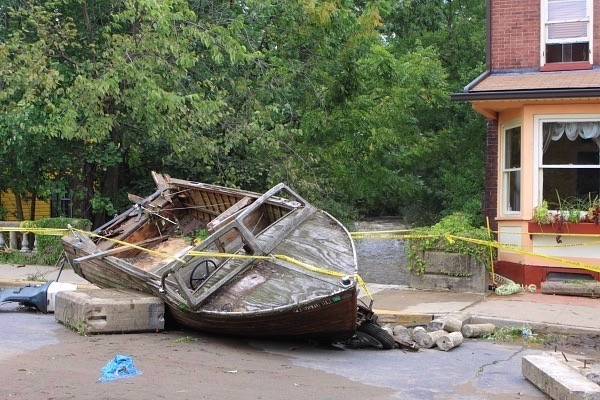Critics Vindicated About Industry Influence On NJ DEP Science Advisory Board
I’ve been appalled by how over the last decades DEP has been pushed off course and effectively abandoned its original mission as a science based regulatory agency and been transformed into what is essentially a toothless finance, grant making, patronage, and public relations operation.
Sometimes I’m reminded of all that when I randomly come across old debates on DEP science and regulation. These echoes prompt me to do a little digging to see how my criticisms of things turned out.
I came across this revealing gem this morning about a 2009 debate over the DEP’s “Science Advisory Board” (SAB):
…. Faced with ongoing budget cuts and staff reductions, [Acting DEP Commissioner] Mauriello contends the advisory board is a natural fit for lean times. He says it is premature to specify the issues he would tap the group to consider. But critics claim the board will be a tool for pro-development and industry forces that want to roll back tough pollution standards and circumvent the DEP’s own scientific staff.
“This thing was created because the science and research people inside the DEP are perceived at top levels as out of control because they did not let politics and the wishes of the administration get in their way of recommending such things as a tougher chromium clean-up standard in Jersey City,” said Bill Wolfe of Public Employees for Environmental Responsibility, or PEER.
Mauriello said he tried to defuse such suspicions through the wording of the May directive he issued to create the board. The work of the panel, according to the directive, would be “limited to specific scientific and technical issues” that the commissioner pitches its way, “not policy or regulatory matters.” Mauriello also said the board will report to the DEP’s staff of scientists, who are helping to select its membership.
“I respect the fears of the environmentalists,” Mauriello said. “But it can only be a good thing to have an independent group of scientists to look at what we do. The days of thinking we don’t need outside assistance are over.”
Let’s break that debate down in light of what has transpired at the DEP SAB during the intervening 14 years.
At the outset, it is important to note the history and context regarding DEP science and regulation.
The SAB was formed during a time of “ongoing [DEP] budget cuts and staff reductions” that had begun 15 years earlier in 1994 by the Whitman administration’s budget cuts and regulatory rollbacks.
Progress to restore damage caused by those Whitman attacks was made under the McGreevey administration in 2002 (e.g. the Category One stream buffer protection program, the Highlands Act, revived and greatly expanded Natural Resource Damage lawsuits, et al). But that progress spawned a furious backlash by industry and developers (particularly in response to DEP over-reach with the “Big Map” land use regulatory initiative). So DEP was under even more withering and sustained criticism by the regulated business community.
Six years later, the Governor at the time the SAB was formed, Jon Corzine, was a former Goldman Sachs Neoliberal and certainly no champion of DEP or environmental regulation.
The Legislature had just privatized the DEP toxic site cleanup program and replaced DEP staff oversight with a private contractor controlled program under the May 2009 “Site Remediation Reform Act”. That legislation thus explains Acting DEP Commissioner Mauriello’s vague remark that “The days of thinking we don’t need outside assistance are over.” That was code for privatization. Mauriello knew all about that kind of political abuse, see:
The prior Jersey City toxic chromium controversy had spawned a DEP whistleblower’s dissenting Report and a crackdown by the DEP Commissioner on DEP scientists, including issuing a gag order and even blocking publication of DEP science in peer reviewed journals. “Out of control” DEP scientist and staffers wrote controversial memo’s about all that.
Shortly thereafter, in the Gubernatorial election of Nov. 2009, Chris Christie was elected Governor and his first action on his first day in Office was issuing 4 sweeping Executive Orders that established a regulatory moratorium, attacked DEP science and targeted regulation for rollbacks (see EO’s #1 – #4). Gov. Christie later nominated and the Senate confirmed a totally unqualified retired corporate consultant, Bob Martin, as DEP Commissioner. Martin openly sought to “transform” DEP to make it more business friendly.
Those facts are critical to understanding the political pressures on DEP scientists and regulators and the true origins and political objectives that drove the formation of the SAB.
So, let’s explore a few specific salient questions:
1. Was the SAB independent and free of industry representation, bias, and advocacy?
2. Did politics intrude and shape SAB science?
3. Did the SAB limit its role to “scientific and technical issues”?
4. Did the SAB “report to DEP’s staff of scientists”?
5. Did the SAB engage the most pressing issues and advance the public interest or corporate interests?
The DEP SAB website provides evidence upon which we can answer these questions. This includes SAB membership and the 44 research Reports issued by the SAB.
I’ve also written many times about the SAB over these 14 years (e.g. see this and this and this and this).
I even successfully sued the DEP to obtain public records regarding the qualifications and background information on scientists that DEP was selecting for the SAB, see: (Star Ledger, 2/23/10):
So let’s respond to those questions:
1. Was the SAB independent and free of industry representation, bias, and advocacy?
No. The evidence is clear.
Business and industry had several representatives appointed to the SAB and the DEP’s ethical standards on conflicts of interest and recusal did not prevent those scientists from participating in issues and SAB deliberations and Reports where they had biases and even conflicts of interest.
Here are specific examples of that:
2. Did politics intrude and shape SAB science?
Yes, although documenting that is nuanced and complex, and the degree of politicization has varied over time.
But the SAB first recommendation Report on the DEP’s “Nitrate Dilution Model” and Assessment of the Median Nitrate Concentration Model for the New Jersey Highlands in Subwatersheds and Land Use Capability Zones are egregious examples of abuse, as they advanced the development community’s transparent attack on DEP land use regulation, water quality standards, and the Highlands Act’s septic density standard (which Christie DEP adopted rollbacks to).
Several other of Commissioner Martin’s charges to the SAB reflect political attacks on DEP science and regulation. Here’s another example:
For the typical kinds of industry attacks on DEP science and regulation, see also this Philadelphia Inquirer story:
[…] Bill Wolfe of NJ PEER said that adding industry to the board would “set up conflicts of interests.”
He also said the bill would change the procedure the institute uses to determine risk, weakening its ability to limit contaminant levels.
“We’re in a very very complex area of science and regulation, and this is a sledge hammer,” he said.
You can see his two blog posts about the measure here.
Hal Bozarth, of the Chemistry Council of New Jersey, supported the legislation. He said that industry and commercial interests were “disenfranchised from participating in a process which affects them greatly.”
The Press Of Atlantic City also published a critical story on the SAB on October 28, 2010 (behind a paywall), which I discuss in this post.
On September 9, 2010, Philadelphia PBS affiliate WHYY also broadcast a critical story about SAB deliberations being conducted behind closed doors and not open to the public – I excerpt and discuss that WHYY story in this post.
So, this issue actually used to get media coverage – Sadly, that is no longer the case.
3. Did the SAB limit its role to “scientific and technical issues”?
No. The evidence is clear.
The large majority of the 44 SAB Reports specifically involved DEP regulatory policy, DEP regulatory standards, and DEP regulatory programs.
4. Did the SAB “report to DEP’s staff of scientists”?
No. The evidence is clear.
The DEP Commissioner selected the issues the SAB would address. The DEP Commissioner issued the charge to the SAB that defined and constrained the SAB’s work. And the SAB issued Reports to the DEP Commissioner, not DEP science staff.
5. Did the SAB engage the most pressing issues and advance the public interest or corporate interests?
This is a more difficult subjective judgment, but in my opinion the answer is clearly no.
The SAB’s first 2016 Report on climate science was about adaptation, not climate science and/or the need for deep and rapid greenhouse gas emissions reductions:
NJDEP Charge Question: Which aspects of climate change should be considered at this point to be inevitable, and how should NJ best adapt to these? What additional studies are indicated to assess statewide vulnerabilities to global warming and sea level rise, and how can these studies be linked to adaptive land use management practices, open space protection, and resource utilization?
The following SAB Reports on climate were basically peer reviews of DEP staff and DEP contractor scientific work, so they served as a check on DEP science, not any advance in climate science that DEP could have relied on to more strictly regulate emissions.
Many other SAB Reports were designed to serve the same overall objectives of the regulated business community, i.e. to check DEP science and limit regulatory power based on that science.
And my criticisms and warnings are vindicated again by history.
So next time, don’t forget: We told you so!



